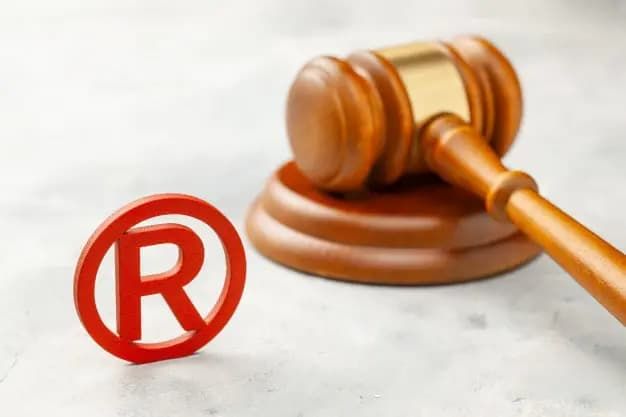How to register a trademark for Latin America from Colombia

What is trademark registration?
Trademark registration is a process by which an entrepreneur is granted exclusive rights over a sign that distinguishes products or services in the market.
It is a voluntary process for each entrepreneur who is interested in protecting their brand as a key asset of their business. From the moment of trademark registration, the state grants exclusivity or monopoly over a sign to an entrepreneur.
This type of trademark registration includes words, images, figures, symbols, graphics, logos, monograms, portraits, labels, or other signs that serve to identify products or services. By law, there should not be identical or similar trademarks that cover identical or related products or services, as this would create a risk of confusion in the market.
Is it possible to register a trademark for all of Latin America, or is it necessary to register in each country?
It is not possible to register a trademark for all of Latin America. Under the Andean Pact, to obtain trademark protection, it is necessary to individually register the trademark in each of the countries that form the Andean Community.
However, through the Madrid Protocol, it is possible to file a single international trademark application, which has the same effect as filing separate applications in each of the countries designated by the applicant. The Latin American countries that are part of the Madrid Protocol are: Brazil, Colombia, Cuba, and Mexico.
Are there any common treaties, agreements, or systems for Latin American countries?
The Madrid Protocol is one of the treaties that forms part of the Madrid System for the International Registration of Marks.
This protocol offers trademark owners the opportunity to protect their trademark in several countries through a single application filed directly with the national trademark office (in Colombia, this is the Superintendency of Industry and Commerce), in one language (Spanish), with a set of predetermined fees in a single currency. It is also not necessary to appoint a local agent in the countries designated for the application.
Additionally, the Madrid Protocol simplifies post-registration management, as changes such as ownership or name, address updates, or renewal of the trademark can be made in all designated countries through a single procedure.
Is the trademark registration process done through the SIC?
In Colombia, the process of international trademark registration for Latin American countries that are part of the Madrid Protocol is done through the Superintendency of Industry and Commerce. For Latin American countries that are not part of the protocol, the process must be carried out in each respective national office.
Trademark registration requirements for Latin America
| For countries that are members of the Madrid Protocol | For Latin American countries that are not part of the Madrid Protocol |
|---|---|
| 1. A single base application in your country of origin, designating the countries or territories where protection is sought. | 1. A different application for each country. |
| 2. The filing rules are unified. | 2. Compliance with the rules of each national office. |
| 3. Applications are filed in a single language. In Colombia, this can be done in Spanish. | 3. Translation of documents into the language of each country. |
| 4. A single form. | 4. A different form in each country. |
| 5. No need to appoint a legal representative in each designated country. | 5. A representative or attorney is required from the outset. |
Trademark registration costs (payment methods, currency)
In the case of Latin American countries that are not part of the Madrid Protocol, each office sets its own fees, usually in the local currency. Some offices offer convenient methods for paying fees, while in others, the process of making payments in the local currency may be complicated and expensive.
However, for Latin American countries that are members of the Madrid Protocol, fees are paid to the International Bureau in a single currency (Swiss francs), and payments can be made through a variety of convenient methods, including credit card payment. From Colombia: applicants for an international trademark registration must pay the SIC a fee for transmitting the application, as set forth in Resolution No. 47754 of 2012[^1]: $52,600 COP. The fees assigned by the International Bureau for Colombia are:

Processing time
The trademark registration process usually takes 8 to 10 months.

Trademark registration duration for Latin America
The protection of an international trademark registration lasts 10 years from the date of registration and can be renewed for additional 10-year periods by paying the renewal fee set by the International Bureau.
Step-by-step process and stages. Is it a single procedure for all Latin American countries, or does it vary by country?
It is a single procedure for the Latin American countries that are part of the Madrid Protocol. However, for those countries not part of the protocol, a separate process must be completed in each country.
For Latin American countries that are part of the Madrid Protocol, the process is as follows:
- First, the applicant must have a registered trademark or a trademark application in their country of origin, which in Colombia is the Superintendency of Industry and Commerce. This is known as the "Basic Registration" or "Basic Application."
- Next, the international application is submitted to the office of origin, which verifies that the international application matches the basic registration or basic application and sends it to the International Bureau.
- The International Bureau conducts a formality examination, publishes the application, and notifies the designated countries of the applicant's request to extend the registration to those countries.
- The designated national trademark offices or intergovernmental organizations then conduct their own examination and must notify the International Bureau of any objections to the extension of protection in that Contracting Party. These objections are called "refusal of protection." If the office does not notify the International Bureau within the established timeframe (see provisional refusal), the application will automatically be registered in that country, with the same effect as if it had been filed directly with that office. The WIPO Gazette is published electronically and can be accessed at: WIPO Gazette[^2].
- The renewal of the registration and other post-registration procedures follow the same process.
How to conduct trademark searches for Latin America?
- Once you have correctly classified the trademark you intend to register, access SIPI, the official system of the SIC for trademark registration and management. The link to this tool is: SIPI.
- Once in SIPI, create an account with your username and password.
- To perform a trademark search, go to the Distinctive Signs tab and select Search Distinctive Signs.
- Then, choose Advanced Search.
- In the Keyword box, enter the trademark of interest, and in the Class of products and/or services box, enter the class of products or services that the trademark will represent.
- If the trademark of interest is not found, also check for similar signs.
- If the desired trademark is already registered, try different options until finding an available one.
- Finally, check the expiration date of trademarks that may pose an obstacle, as once a trademark expires, the owner loses exclusivity rights over it.
How is the process carried out from Colombia?
For Latin American countries that are part of the Madrid Protocol, the international trademark application must be submitted using the official MM2 form provided by the International Bureau of the World Intellectual Property Organization (WIPO) on its website: WIPO Forms. The application can be submitted online. For more information, follow the Instructions[^4] to complete the forms.
For Latin American countries that are not part of the Madrid Protocol, the process must be completed according to the rules of each country in their respective national offices.
Which countries are involved?
The Latin American countries that are part of the Madrid Protocol are: Brazil, Colombia, Cuba, and Mexico. An updated list of Contracting Parties is available on the website of the World Intellectual Property Organization (WIPO): WIPO Members.
Cybergraphy
[1] Resolution 47754 of 2012. taken from: http://www.suin-juriscol.gov.co/viewdocument.asp?Ruta=Resolucion/4040696
[2] Article: How to register in other countries? Retrieved from: https://www.sic.gov.co/propiedad-industrial/como-registrar-en-otros-paises
[3] Article: Manual for registering a trademark before the Superintendence of Industry and Commerce (sic) through the SIPI. Luis Fernando Patrón Fuentes.
[4] Instructions for filling out and printing the Madrid forms in pdf format: https://www.wipo.int/madrid/es/forms/instructions.html
Recommended articles
Would you like some advice?
Please fill out the following form, and we will get in touch with you.
- Phone:300 388 4986
- WhatsApp:Click to start your WhatsApp chat
